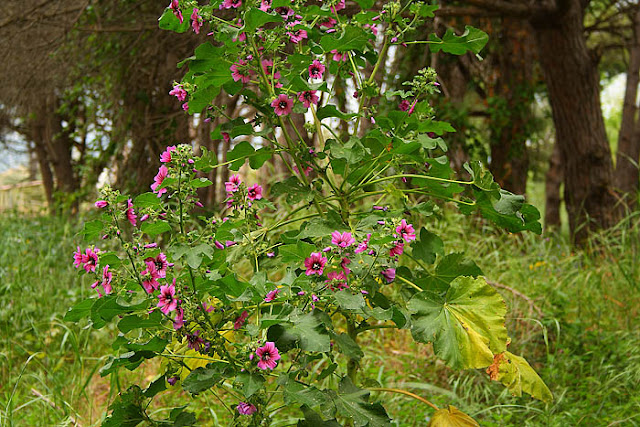 |
| Deep orange garden nasturtium (Tropaeolum Majus) flower (© LightColourShade. All rights reserved) |
Catching the fleeting scenes of many splendored life
'Look closely. The beautiful may be small' — Kant
17 June 2013
Garden Nasturtium (Tropaeolum Majus) and The Forest Cockchafer (Melolontha hippocastani)
Garden Nasturtium (Tropaeolum Majus), Indian cress or monks cress) belongs to the family Tropaeolaceae and is native to the Andes from Bolivia to Colombia. Garden nasturtiums are grown for their showy flowers and as a medicinal plant. Besides, both their leaves and flowers are edible — they add beauty and a delicious peppery flavour to salads.
15 June 2013
Setting Sun
'How can you keep a ray of sun in your hand?
How can you make stay a wave on the sand?'
According to the official scientific definition, our Sun is "a medium-sized star located in a spiral arm of the Milky Way galaxy, orbited by all of the planets and other bodies in our solar system and supplying the heat and light that sustain life on Earth.
Nuclear fusion produces tremendous amounts of energy in its core reaching the temperature of some 16 million degrees C (27 million degrees F), while the surface is about 6,200 degrees C (11,200 degrees F) hot. The energy then radiates through a radiation zone to an opaque convection zone, where it rises to the surface through convection currents of the Sun's plasma. The Sun's surface is constantly disturbed by turbulent phenomena, such as magnetic storms, sunspots, and solar flares. The Sun was formed along with the rest of the solar system about 4.5 billion years ago and is expected to run out of its current hydrogen fuel in another 5 billion years, at which point it will develop into a red giant and ultimately into a white dwarf."
But I think there's much more to it than just nuclear reactions...
'The sun shone as if there were no death' —Saul Bellow.
 |
| Sun setting into the sea. (© LightColourShade. All rights reserved) |
11 June 2013
Tree Mallow (Lavatera Arborea) and Birch Tree
Since I'm eclectic by nature most times I grab my camera I'm not after a particular subject for a picture, but rather looking for something to catch my eye — I just love to leave it to the play of chance.
It can be a lonely wildflower bush in the forest, or
It can be a lonely wildflower bush in the forest, or
+bush+in+the+forest.jpg) |
| Lavatera arborea (Tree Mallow) bush in the forest. (© LightColourShade. All rights reserved) |
Labels:
Flowers,
Forest,
Plants,
Reflections,
Spring,
Trees,
Water,
Wildflowers
8 June 2013
Wild Garlic, Crow Garlic (Allium Vineale) and Iridescent Blue Beetle
Subscribe to:
Comments (Atom)
